Weekly cattle and sheep market wrap
Key points
- Restockers and lot feeders are showing increased interest in the cattle market.
- The Restocker Lamb Indicator has risen above the Trade Lamb Indicator for the first time since April 2022.
- National cattle slaughter reached 158,511 head, marking the second largest weekly total in five years.
Cattle market
The cattle market is green across the board with the Restocker Yearling Steer Indicator lifting the most – up 22¢ to 468¢/kg liveweight (lwt) and the Feeder Heifer Indicator up 17¢ to 414¢/kg lwt. Cattle yardings eased by 8,223 to 59,994 head.
Market reports indicated interest from restockers and lot feeders. There was strong demand for feeder heifers at Wagga, particularly those from the north and southern regions of SA. This led to prices lifting between 10–16¢.
Sheep market
Sheep prices also increased, with restocker lambs above trade lambs for the first time since April 2022. Yardings eased by 45,683 to 272,198 head, with drops in both lamb and sheep.
The Heavy Lamb Indicator lifted 59¢ to 1,113¢/kg carcase weight (cwt). Prices were mostly positive across the states with NSW lifting 89¢ and notably at Wagga which saw a price lift of 176¢. This significant price increase was driven by southern processors dominating the market, often outbidding northern processors for lambs weighing between 26–30kg. Heavier young lambs recorded higher prices.
The Merino Lamb Indicator lifted 85¢ to 980¢/kg cwt but supply eased by 4,312 head. Market reports at Dubbo recorded more secondary lambs, leading to merinos being sold for a higher price. This could be due to fewer well-finished sheep being available, generating a merino lamb price spike.
Slaughter
Week ending 24 October 2025
Cattle slaughter
National cattle slaughter rose 4% week-on-week to 158,511 head, marking the second largest weekly slaughter in the last five years. Queensland drove the growth, with slaughter rising to 84,290 head – the state’s largest weekly slaughter in almost a decade. Victoria also rose − up 6% to 26,443 head. NSW lifted 2% to 35,839 head. National slaughter was up 9% year-on-year (YoY), reflecting increased cattle availability and strong processor demand.
State-by-state cattle slaughter:
- NSW: up 1.8% to 35,839
- Queensland: up 4.1% to 84,290
- SA: steady at 3,814
- Tasmania: up 1.9% to 4,508
- Victoria: up 5.8% to 26,443
- WA: up 1.7% to 3,617.
Sheep slaughter
Combined sheep and lamb slaughter significantly increased (+16.5%) by 89,138 head to total 628,339 head. Lamb slaughter delivered most of the throughput at 428,236 head, with sheep accounting for 200,103 head. Despite the slaughter number rise, the combined YoY change was negative − down 8.79% (60,563 head).
Lamb slaughter lifted 17% to 437,848 head, reflecting an uplift following the previous week’s slowdown. Year-to-date (YTD) lamb slaughter lessened 3% as key region lamb supply slowed. Sheep slaughter lifted 24,579 to 190,491 head. NSW contributed the largest portion of sheep slaughter, processing 76,337 head, followed by Victoria (58,427 head) and WA (37,940 head). YTD sheep slaughter remains 23% lower compared to the same time last year.
State-by-state lamb slaughter:
- NSW: up 0.47% to 110,960
- Queensland: down 16.86% to 1,233
- SA: up 9.5% to 46,170
- Tasmania: down 14.13% to 7,026
- Victoria: up 0.71% to 219,447
- WA: up 2.81% to 53,012.
Attribute content to Emily Tan, MLA Market Information Analyst
Information is correct at time of publication on 31 October 2025



